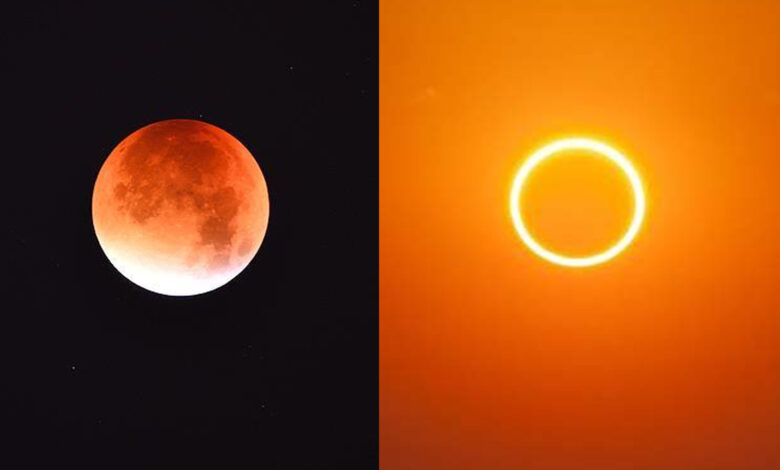2025 Celestial Spectacle: Two ‘Blood Moons’ and Two Solar Eclipses Await Skywatchers
In 2025, astronomy enthusiasts and casual stargazers alike have a series of extraordinary celestial events to look forward to, with two total lunar eclipses, famously known as "Blood Moons," and two partial solar eclipses set to grace the skies. Here's what you need to know about these cosmic phenomena.

In 2025, astronomy enthusiasts and casual stargazers alike have a series of extraordinary celestial events to look forward to, with two total lunar eclipses, famously known as “Blood Moons,” and two partial solar eclipses set to grace the skies. Here’s what you need to know about these cosmic phenomena.
Total Lunar Eclipses:
March 14, 2025: The first ‘Blood Moon’ of the year will occur in the early hours of March 14. Visible across North and South America, this total lunar eclipse will be a spectacle as the moon turns a deep red hue, dubbed “Blood Moon” due to the Earth’s shadow casting a reddish glow. The event will start at 06:26 GMT and reach totality from 07:26 to 08:31 GMT, with the moon fully within Earth’s shadow.
September 7, 2025: The second total lunar eclipse will be visible from Europe, Asia, Australia, Africa, and parts of the Americas. It’s particularly exciting for those in the Eastern Hemisphere as the moon will once again turn into a ‘Blood Moon’ due to the Earth’s atmospheric scattering of sunlight. The eclipse will begin at 17:27 GMT, with totality from 18:27 to 19:52 GMT.
Partial Solar Eclipses:
March 29, 2025: Following the lunar eclipse, a partial solar eclipse will take place, visible in parts of the northeastern United States, eastern Canada, Greenland, Europe, Northwest Africa, and northwestern Russia. At its peak, the Moon will cover about 94% of the Sun’s disk, but this varies by location. Remember, viewing a solar eclipse requires special eye protection to avoid damage to the eyes.
September 21, 2025: The year’s second partial solar eclipse will be observed from regions including Australia, Antarctica, parts of the Pacific, and the Atlantic Oceans. This event won’t be visible from North America but will provide a unique experience for those in the Southern Hemisphere. Again, safe viewing practices are crucial.
Why ‘Blood Moon’?
The term ‘Blood Moon’ comes from the reddish color the moon can take on during a total lunar eclipse. This happens because as the Earth moves between the Sun and the Moon, it casts its shadow on the Moon. However, some light from the Sun passes through Earth’s atmosphere, which filters out shorter-wavelength colors like blue and green, bending longer-wavelength red light onto the Moon’s surface.
Preparation and Viewing Tips:
For the lunar eclipses, no special equipment is needed beyond clear skies, making them a treat for all to see. Solar eclipses, however, require eclipse glasses or solar filters for safe observation. Planning ahead for travel to optimal viewing locations or ensuring you have the right gear can make these events unforgettable.
2025 promises to be a year of celestial wonder, offering opportunities to witness the beauty and complexity of our solar system in action. Whether you’re in the Northern or Southern Hemisphere, mark your calendars for these must-see astronomical events.




